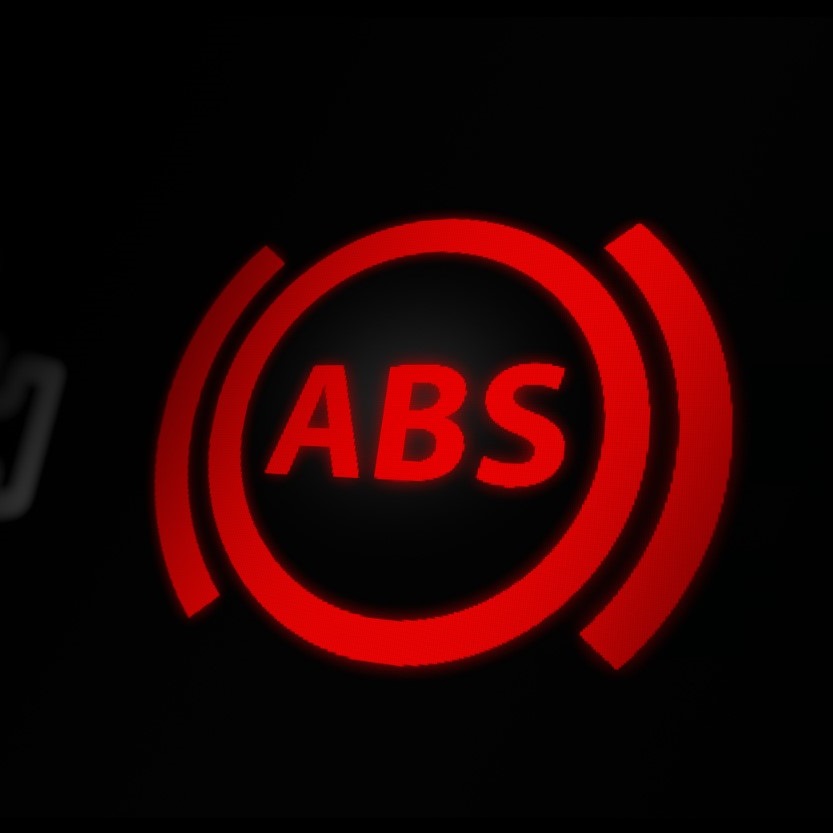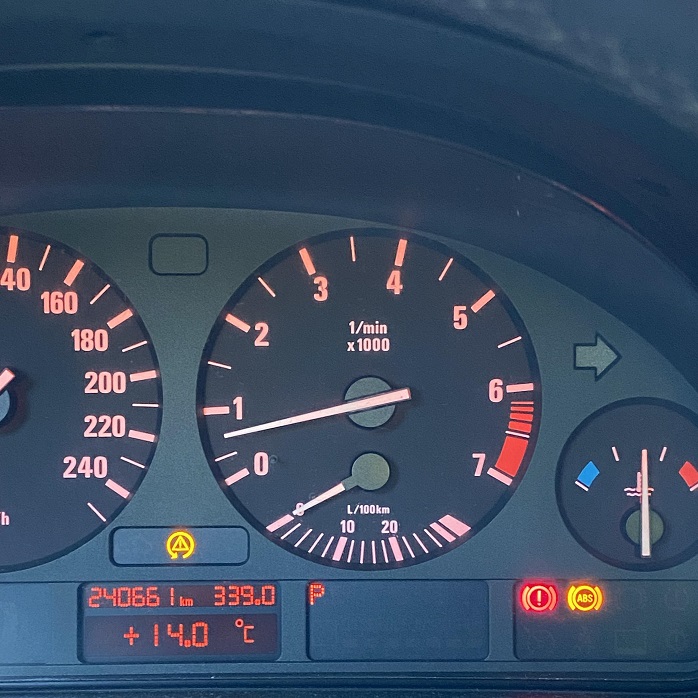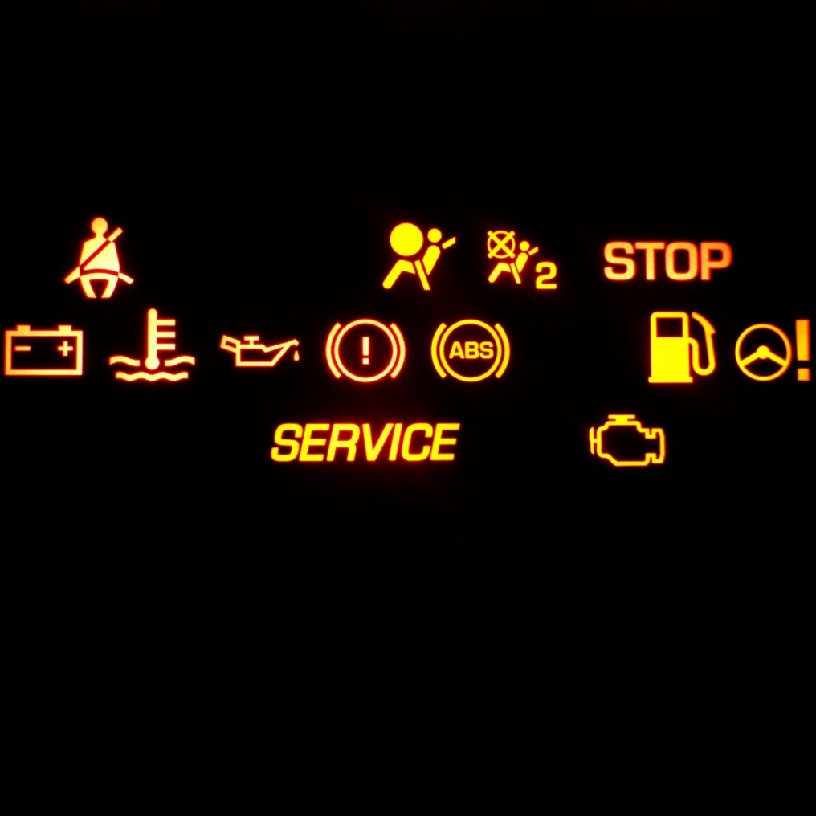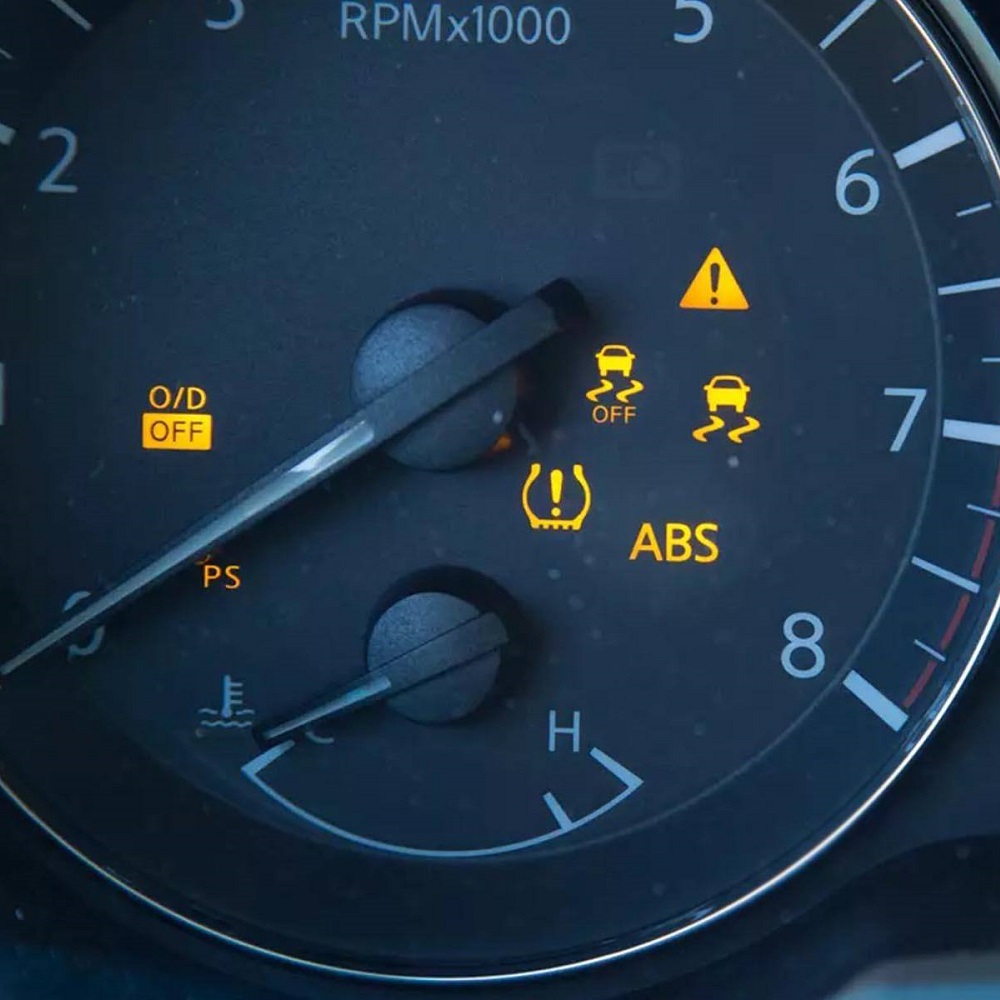Introduction to Anti-Lock Braking Systems (ABS)
The Anti-Lock Braking System, or ABS, is a key safety feature in modern vehicles. It helps prevent wheels from locking during hard braking. This lets you keep control of the car. ABS is now standard in many cars around the world. It first gained attention in the 1970s. Then, car makers like Ford and Chrysler started to adopt it. By 2004, it became a must-have in all new cars sold in Europe.
ABS involves a smart use of sensors and computer power. These parts work together to keep your car stable. Especially when braking suddenly. When it senses a wheel may lock, it adjusts the brakes fast. This happens hundreds of times per second. You might feel the brake pedal pulse under your foot. That’s ABS at work.
Remember, when you start your car, the ABS light should turn on and off quickly. It checks if the system works right. If the light stays on, your ABS might have a problem that needs fixing.
Understanding How ABS Works
Every car wheel has a sensor linked to the anti-lock braking system (ABS). When you brake hard, ABS quickly checks if any wheel might lock up. If a wheel is about to stop turning, the system reacts. The ABS tells the car’s computer to ease the brake on that wheel for a moment. Then, it applies the brake again. This on-off pattern happens many times in a second. It helps keep the car from skidding.
This system is part of your car’s electronic stability control (ESC). The ESC works with ABS to keep the car stable during quick stops. ABS does its job so well, you might feel a pulsing in the brake pedal. That’s when it’s on, stopping the wheels from locking.
When you turn on your car, the ABS light should flash on and off. It means the system is checking itself. If the light stays on, there might be an ABS problem. It’s a signal to get your car checked. Remember, ABS works with sensors, a computer (the ECU), and your brakes to keep you safe. It’s like a quick-thinking helper that jumps in to stop accidents before they happen.

When Anti-Lock Brakes are Most Effective
ABS shines in sudden braking scenarios. It’s perfect when you need a quick stop. Anti-lock brakes prevent wheel locks when stopping hard. They allow for steering control during emergency stops. This prevents skidding on the road.
Wet or dry roads, ABS works well. It’s most helpful in avoiding front crashes. On stable surfaces, ABS helps drivers maintain control. But, remember, ABS can struggle on ice, snow, or gravel. Here, its effectiveness goes down.
In most traffic situations, ABS offers a safety shield. Keep in mind, ABS helps with car control, not stopping distance. Fast brake reaction triggers the system. So, do brake firmly and quickly when needed. This invites ABS to jump in and do its job.
Cloudy with a chance of rain? ABS could be your best friend on slick streets. On snowy days, it’s still useful, but less so. As for off-road adventures, ABS may get in the way. If you drive off-road a lot, know how ABS behaves on rough terrain.
In summary, ABS is your ally in sudden, must-stop moments. It works well on most roads. However, consider its limits and use it wisely for your safety.
Benefits of Having ABS in Your Vehicle
Including an Anti-Lock Braking System (ABS) in your vehicle brings several safety advantages. Here’s a breakdown of the key benefits:
- Enhanced Control: ABS prevents wheel lock-up during emergency braking. It helps you keep control of the car.
- Reducing Skids: By managing wheel speed, ABS reduces the risk of skidding. This is crucial on wet or slippery roads.
- Improved Steering: Even when you brake hard, you can still steer. This might let you avoid a crash.
- Increased Confidence: Knowing you have ABS can boost your driving confidence. This can make all the difference in stressful situations.
- Better Safety Records: Cars with ABS often have fewer crashes. This is especially true for frontal collisions.
- Quicker Recovery: If you do skid, ABS helps you recover control faster. This minimizes potential damage or injury.
- Cornering Support: ABS assists in maintaining control while cornering. This extra support can be vital at higher speeds.
It is clear that ABS offers substantial benefits for daily driving and emergency situations alike. It is a key feature that helps to improve the overall safety on the road. Remember to check your ABS regularly and ensure it is functioning properly to fully benefit from these advantages.
Common Misconceptions and Limitations of ABS
When it comes to anti-lock braking systems (ABS), some drivers hold mistaken beliefs. A common mistake is thinking ABS shortens stopping distances. In reality, ABS mainly prevents wheel lock-up to maintain steering control, not necessarily to stop quicker. Another misconception is that ABS makes a car invincible in bad weather. While ABS is helpful, it does not eliminate the need for careful driving on ice, snow, or gravel.
ABS does have its limitations as well. For instance, on non-paved surfaces like gravel or dirt, ABS may intervene too much. As a result, it might increase the stopping distance compared to locked wheels that can build up a wedge of loose surface material in front of the wheels. Also, ABS is less effective on extremely slippery surfaces, such as ice, where the locked wheels might create a rough surface to grip onto.
However, despite these limitations, ABS is a crucial safety feature in cars. It gives drivers a much better chance of avoiding a crash during a sudden stop. This is especially true on regular roads and in less extreme conditions. It is important to understand and respect the boundaries of ABS to use it effectively and maintain safety.
Drivers should also remember that good driving habits are crucial. ABS is a tool, not a replacement for responsible driving. Always adjust your speed for conditions, and don’t assume ABS can make up for risky behavior. It’s a support system, not a superhero cape. Keeping ABS in good working order is also essential for it to function as needed. So regular maintenance checks are a must to ensure safety on the road.
Dealing with ABS Issues: Tips and Tricks
When the ABS light in your car stays illuminated, it’s a warning you shouldn’t ignore. You need to act swiftly to ensure your safety on the road. Here are some tips and tricks that can help you handle ABS issues effectively.
Identify the Warning Signs
Start by noting the behavior of your ABS light when you turn on the car. If it flickers then stays on, it could signal a glitch. Look out, too, for other warning lights. They could point to broader issues.
Check the Basics
Simple checks often reveal easy fixes. First, ensure your brake fluid is at the right level. Low fluid can activate the ABS light. Refill as needed, but stick to the type specified for your car.
Inspect the ABS Sensors
Dirt or damage on ABS sensors can cause issues. Each wheel has a sensor. Check them for buildup or wear and tear. A soft brush or dry cloth can clean away grime. If you spot damage, a mechanic should take a look.
Consult Your Manual
Your car’s manual is a useful resource. It can guide you on vital checks. It also explains what your specific ABS warning lights mean.
Diagnose with Care
If your ABS light persistently stays on, diagnosing the problem with care is crucial. Use an OBD-II scanner if you have one. These tools read error codes from your car’s computer.
Don’t Delay Repairs
Ignoring ABS issues puts you at risk. Swift repairs are vital. If you’re unsure or not able to resolve the issue, contact a skilled mechanic. They have the tools and knowledge to pinpoint and fix the problem.
These tips empower you to respond correctly to ABS light warnings. Remember, acting quickly can prevent further damage to your car and keep you safe while driving. Even with these pointers, professional help is often the safest route for dealing with ABS light car problems.
What Triggers the ABS Warning Light?
Your car’s ABS light can come on for several reasons, indicating issues that require attention. Here are common triggers that can activate the ABS warning light in your car:
- Low Brake Fluid Levels: If brake fluid drops below a certain point, the ABS light may turn on. It is essential to maintain the right fluid levels for ABS to function correctly.
- Faulty Wheel Speed Sensors: These sensors monitor wheel rotation. Damage or dirt on them can lead to false readings, which trigger the ABS light.
- Bad ABS Module: The ABS module controls the system. If it has problems, the ABS light might come on.
- System Malfunctions: Any disruption in the ABS can alert the system, resulting in the ABS light’s activation.
- Worn Brake Components: Over time, brakes wear down. This can affect ABS operation, causing the warning light to illuminate.
- Wiring Issues: Damaged or corroded wires can interfere with the ABS system and light up the warning.
Regular checks can prevent some of these triggers. If the ABS light comes on, don’t wait too long to diagnose and act. Early detection can make repairs simpler and cheaper. And it will keep you safer on the road.
Step-by-Step Guide When ABS Light Comes On
When the ABS light in your car illuminates, it’s important to address it promptly. Here’s a simple guide to follow:
- Check the ABS Light Indicator: Turn on your car’s engine and notice if the ABS light turns off after a few seconds. If it stays on, you need to take further action.
- Consult the Owner’s Manual: Refer to your car’s manual for specific guidance related to the ABS system and its warning lights.
- Perform a Visual Inspection: Look under your car for any obvious signs of damage or leaks that could affect the ABS.
- Check Brake Fluid Levels: Make sure the brake fluid is at the correct level as low fluid can trigger the ABS warning.
- Inspect ABS Sensors: Each wheel has an ABS sensor. Check for buildup of dirt or damage and clean if necessary with a dry cloth.
- Test Drive: Safely test drive your car to see if the ABS light goes off or stays on. Note any changes in braking performance.
- Use an OBD-II Scanner: If you have one, use an OBD-II scanner to read any fault codes from the ABS system.
- Seek Professional Assistance: If the ABS light continues to stay on, contact a professional mechanic. Don’t attempt complex repairs if you are not experienced.
- Address the Issue Quickly: Delaying ABS repairs can lead to more severe issues and unsafe driving conditions.
- Maintenance Check-Up: Even if the light turns off, schedule a maintenance check-up to ensure there are no underlying issues.
Following these steps can help you determine the cause of the ABS light illumination and whether it’s a simple fix or requires professional attention. Acting quickly when the ABS light car stays on ensures your vehicle remains safe on the road.
DIY Checks and Fixes for ABS Light Problems
When you spot the ABS light car warning, don’t panic. Here’s what you can do yourself. First, check the brake fluid. Low fluid might be why the light came on. Top it up if needed, using the right type. Next, look at the ABS sensors on the wheels. They can get dirty or damaged. Use a cloth to clean them. This could fix the problem. If the light still stays on, check the fuse related to the ABS system. The owner’s manual shows where it is. Replace it if it looks blown. These checks can be simple but effective. Remember, not all issues are DIY fixes. If the ABS light remains, seek professional help. It’s about safety, after all.
Professional Solutions: When to Seek a Mechanic’s Help
Sometimes, an issue with your ABS light car requires a professional’s touch. Here is when you should seek help from a mechanic:
- Persistent ABS Light: If the ABS light stays on after DIY checks, it’s time for a mechanic. They can diagnose the issue more deeply.
- Complex Errors: If your OBD-II scanner shows complex fault codes, these are often beyond DIY fixes. Mechanics have the tools and training to handle these.
- Brake Performance Changes: Notice any changes in how your brakes feel? A mechanic should check this out right away. It could be a serious problem.
- ABS Activation Issues: If ABS activates randomly or not at all, a mechanic needs to look. There could be a fault in the system’s operation.
- After an Accident: Had a bump or crash? Even if there’s no visible damage, it’s wise to get the ABS checked. Problems may not be obvious right away.
- Warning Light Dance: Seeing multiple warning lights? This often hints at broader issues. A mechanic can figure out what’s wrong.
Mechanics have the right tools and know-how. They can keep your ABS system in top shape. Remember, ABS is about safety. Don’t risk yours by delaying a mechanic visit when needed. Their expertise can be the difference between a quick fix and a costly repair down the road.
Conclusion: Importance of ABS Maintenance and Safety
Maintaining your Anti-Lock Braking System (ABS) is vital for car safety. The ABS helps prevent accidents by keeping wheels from locking during sudden stops. Ensuring your ABS is working properly can save lives. Regular checks can catch problems early. This helps avoid costly fixes and keeps the system reliable. Remember to act fast if the ABS light car stays on. This light means there’s an issue that may need a mechanic’s help.
To keep ABS effective, follow these practices:
- Check the ABS regularly: Look out for warning lights and perform regular maintenance.
- Know the signs: Learn what triggers the ABS warning light, like low brake fluid or faulty sensors.
- Act swiftly: If you see the ABS light car on, inspect it at once. Don’t wait as this can lead to more damage.
- Consult professionals: Don’t hesitate to seek a mechanic’s help when needed. They have the skills to fix complex problems.
- Understand its value: Appreciate how ABS adds to your driving safety. It’s an important feature not to be overlooked.
ABS is more than a feature; it’s a critical safety system in your vehicle. Caring for it means caring for the safety of all road users. It’s worth the time and effort to understand and maintain your car’s ABS.


